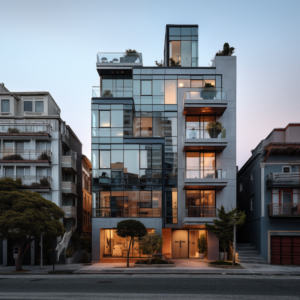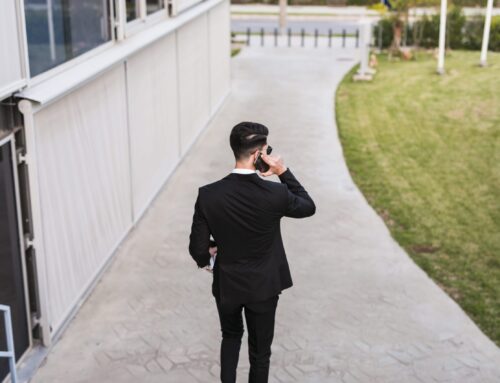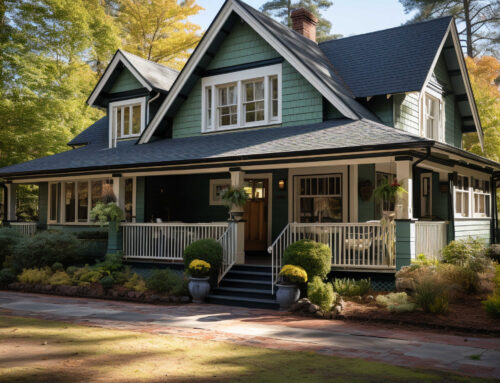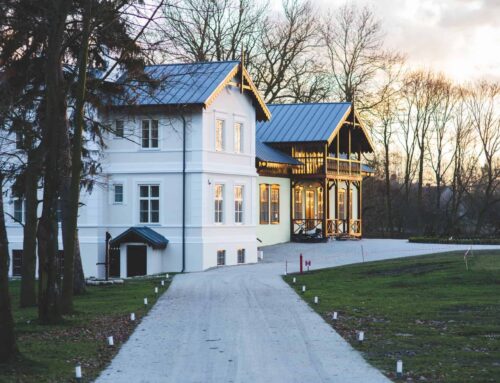Green and Sustainable Real Estate Practices in San Francisco
 San Francisco, known for its iconic Golden Gate Bridge, vibrant cultural scene, and technological innovation, is also at the forefront of the green and sustainable real estate movement. As environmental concerns take center stage globally, San Francisco’s real estate sector is responding with eco-friendly building initiatives, LEED-certified properties, and a growing demand for sustainable living options. This post explores how the city is leading the way in green real estate practices, highlighting the benefits and challenges of sustainable development.
San Francisco, known for its iconic Golden Gate Bridge, vibrant cultural scene, and technological innovation, is also at the forefront of the green and sustainable real estate movement. As environmental concerns take center stage globally, San Francisco’s real estate sector is responding with eco-friendly building initiatives, LEED-certified properties, and a growing demand for sustainable living options. This post explores how the city is leading the way in green real estate practices, highlighting the benefits and challenges of sustainable development.
Eco-Friendly Building Initiatives
San Francisco’s commitment to sustainability is evident in its rigorous building standards and incentives for green construction. The city has implemented several initiatives aimed at reducing carbon footprint, enhancing energy efficiency, and promoting renewable energy use. One notable program is the Green Building Code, which mandates that new residential and commercial buildings meet stringent sustainability criteria. These include using energy-efficient lighting, water-saving plumbing fixtures, and environmentally friendly materials that contribute to healthier indoor air quality.
Moreover, San Francisco encourages the installation of green roofs and living walls. These not only improve building insulation but also combat urban heat island effects, support biodiversity, and manage stormwater runoff more effectively. The city also offers incentives for solar panel installations, further promoting renewable energy use in residential and commercial properties.
LEED-Certified Properties
Leadership in Energy and Environmental Design (LEED) certification is a globally recognized symbol of sustainability achievement. San Francisco boasts many LEED-certified properties, underscoring the city’s commitment to environmental stewardship and sustainable building practices. These properties range from commercial skyscrapers and government buildings to residential complexes, all designed to minimize environmental impact through energy and water efficiency, reduced greenhouse gas emissions, and improved indoor environmental quality.
LEED-certified buildings in San Francisco not only contribute to the city’s green landscape but also offer tangible benefits to occupants and owners. These include lower utility costs, higher property values, and enhanced occupant comfort and health. The prevalence of LEED-certified buildings in San Francisco reflects the city’s broader sustainability goals and its residents’ preference for environmentally responsible living spaces.
Etta, 1285 Sutter Street
The Etta building in San Francisco is a notable example of sustainable residential design, achieving LEED Gold certification, which showcases its commitment to environmental sustainability and energy efficiency. Located at 1285 Sutter Street, Etta is designed with a focus on creating a green living environment for its residents. The building encompasses 107 residential units and includes 9,750 square feet of retail space on the ground floor.
Specific sustainable design elements highlighted in the LEED documentation and construction process include efficient use of space and resources, energy-saving measures, and incorporation of environmentally friendly materials. The building’s location adjacent to the Pacific Heights and Nob Hill neighborhoods also provides residents access to local amenities and public transportation options, further supporting a sustainable lifestyle.
Growing Demand for Sustainable Living
The demand for sustainable living options in San Francisco is on the rise, driven by increased environmental awareness and the desire for healthier lifestyles. Prospective homeowners and renters increasingly prioritize energy efficiency, green space, and eco-friendly materials in their housing choices. This shift in consumer preferences encourages developers to incorporate sustainable features into new projects and retrofit existing properties to meet green standards.
Sustainable living in San Francisco is not limited to the buildings themselves but extends to the communities they are part of. Many developments are designed to promote walkability, reduce car dependency, and enhance access to public transportation, parks, and local amenities. These features contribute to a lower carbon footprint and a higher quality of life, aligning with the city’s environmental and social sustainability objectives.
Challenges and Future Directions
Despite progress, challenges remain in expanding green and sustainable real estate practices in San Francisco. High construction costs, regulatory hurdles, and the need for ongoing education and awareness are obstacles to the further adoption of sustainable building techniques. Additionally, retrofitting older buildings to meet current green standards can be complex and expensive.
Looking forward, San Francisco is poised to continue its green and sustainable real estate leadership. Ongoing collaboration between the city, developers, and the community will be crucial in overcoming existing challenges and fostering innovation in sustainable building practices. As technology advances and public support for environmental initiatives grows, San Francisco’s real estate sector is set to become even greener, contributing to the city’s resilience and sustainability for future generations.
San Francisco’s green and sustainable real estate practices exemplify the city’s commitment to environmental responsibility and innovation. San Francisco is setting a benchmark for cities worldwide through eco-friendly building initiatives, LEED-certified properties, and the growing demand for sustainable living. As the movement towards sustainable development gains momentum, the lessons learned in San Francisco can provide valuable insights and inspiration for others seeking to embrace green real estate practices.




